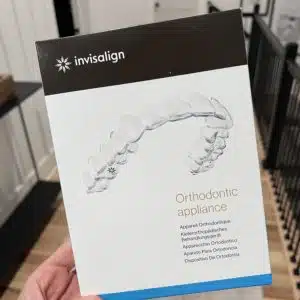Embarking on the journey of self-employment brings about a sense of freedom and autonomy. However, with great power comes great responsibility, especially when it comes to securing your financial future. Unlike their counterparts in traditional employment, self-employed individuals do not have access to employer-sponsored retirement plans, making it imperative for them to proactively explore and invest in retirement savings options.
When it comes to self-employment and retirement, myths and misconceptions abound. Fortunately, I’ve got the details on some of the most popular retirement options for self-employed workers. Today’s post is a response to a reader’s question on how to maximize retirement contributions when you’re self-employed.
Reader Shane asks:
“I’m self-employed so I don’t have the luxury of having a 401(k). I do have a Roth and I contribute the maximum amount each year. My question is, are there any other ways I could put money away for the future that would give me a better return?”
Table of Contents
Importance of Retirement Planning for the Self-Employed
Lack of Employer-Sponsored Plans
The absence of employer-sponsored retirement plans puts the onus of retirement planning squarely on the shoulders of self-employed individuals. It is crucial to understand that the responsibility to seek out, contribute to, and manage a retirement plan falls entirely on you.
Need for Proactive Planning
Proactive planning is the cornerstone of a secure retirement. Starting early, making informed choices, and consistently contributing to your retirement fund will pay off in the long run, ensuring that you have a robust financial safety net when you decide to retire.
Potential for Higher Contribution Limits
One of the silver linings for self-employed professionals is the potential for higher contribution limits in certain retirement plans. Some plans designed specifically for the self-employed allow for larger annual contributions than traditional employer-sponsored plans, providing a unique opportunity to accelerate retirement savings.
Self-Employed Retirement Plan Options
When it comes to retirement planning for the self-employed, the array of available options is both a blessing and a challenge. Each plan has its unique features, benefits, and rules, making it essential to understand them in depth to make the best choice for your financial future.
Traditional Individual Retirement Account (IRA)
A Traditional IRA is a popular choice due to its simplicity and accessibility. Contributions to this account are tax-deductible, lowering your taxable income for the year of contribution. The funds in the account grow tax-deferred until retirement, at which point withdrawals are taxed as regular income.
Roth IRA:
A Roth IRA operates on a different tax structure. Contributions are made with post-tax dollars, meaning you don’t get a tax deduction in the year of contribution. However, this sets you up for tax-free withdrawals in retirement, which can be a significant advantage, especially if you expect to be in a higher tax bracket in your retirement years.
Like the Traditional IRA, the contribution limit is $7,000, or $8,000 if you’re 50 or older. Roth IRAs also offer more flexibility with withdrawals before retirement, although it’s generally best to let the funds grow tax-free for as long as possible.
Simplified Employee Pension (SEP) IRA
Specifically designed for self-employed individuals and small business owners, the SEP IRA allows for significantly higher contribution limits—up to 25% of your net earnings from self-employment, with a maximum of $69,000 for 2025. This plan is straightforward to set up and administer, making it a favorite among self-employed professionals. However, if you have employees, you are generally required to contribute on their behalf as well.
Savings Incentive Match Plan for Employees (SIMPLE) IRA
The SIMPLE IRA is tailored for small businesses and offers a combination of employer and employee contributions. As a self-employed individual, you wear both hats, allowing you to contribute as both employer and employee. For 2025, the contribution limit is $16,000, or $19,500 if you’re 50 or older. This plan is simple to administer, but the contribution limits are lower than some other options.
Solo 401(k)
The Solo 401(k) takes the benefits of a traditional 401(k) and opens them up to self-employed individuals. You can contribute as both employee and employer, with total contribution limits up to $69,000 for 2025, or $76,500 if you’re 50 or older. This plan offers high contribution limits and flexibility but requires more paperwork and responsibility to administer than an IRA.
Defined Benefit Plan
For those looking to save large amounts for retirement in a short period, a Defined Benefit Plan can be an excellent option. You can contribute more than other retirement plans, potentially hundreds of thousands of dollars annually, but this plan requires actuarial calculations and more administrative work. It’s a complex option but can offer substantial tax benefits and savings potential for high earners looking to catch up on their retirement savings.
Comparing Self-Employed Retirement Plans: A Guide to Key Features and Limits
| Retirement Plan | Description | Key Features |
|---|---|---|
| Traditional IRA | Tax-Deductible Contributions; Growth Tax-Deferred Until Retirement | • 2025 Limit: $7,000 ($8,000 if 50+) • Rules for Early Withdrawal and RMDs at 73 |
| Roth IRA | Post-Tax Contributions; Tax-Free Withdrawals in Retirement | • 2025 Limit: $7,000 ($8,000 if 50+) • Flexible Withdrawals |
| SEP IRA | For Self-Employed; High Contribution Limits | • 2025 Limit: 25% of Net Earnings, Max $69,000 • Simple Setup, Possible Employee Contributions |
| SIMPLE IRA | Small Business Focus; Combines Employer and Employee Contributions | • 2025 Limit: $16,000 ($19,500 if 50+) • Easy Administration, Moderate Limits |
| Solo 401(k) | Merged Benefits of 401(k) for Self-Employed; High Contribution Flexibility | • 2025 Total Limit: $69,000 ($76,500 if 50+) • Flexible but Paperwork-Intensive |
| Defined Benefit Plan | Ideal for Rapid Large Savings; Requires Actuarial Calculations | • Potential for Substantial Annual Contributions • Complex, Significant Tax Benefits |
Maximizing Your Retirement Savings
- Understanding Tax Implications: Grasping the tax implications of different retirement plans is crucial. Choosing the right plan can significantly impact your tax situation, both now and in retirement.
- Strategies for Maximizing Contributions: Implementing strategies to maximize your contributions, such as consistent saving and taking advantage of catch-up contributions if eligible, will bolster your retirement savings.
- Diversifying Your Investment Portfolio: A diversified investment portfolio can help mitigate risk and enhance potential returns over time, contributing to a more secure financial future.
Navigating Challenges and Common Pitfalls
- Fluctuating Income and Savings Consistency: Dealing with fluctuating income is a common challenge for self-employed individuals. Developing a savings strategy that accommodates this variability is key.
- Accessing Funds Before Retirement Age: It can be tempting to access retirement funds prematurely, but this can lead to penalties and diminish your retirement savings. Resisting this temptation is crucial.
- Planning for Healthcare Costs in Retirement: Healthcare costs can be a significant expense in retirement. Planning for these costs and considering options like Health Savings Accounts (HSAs) is vital.
The Bottom Line
Navigating the maze of self-employed retirement options requires diligence and a proactive approach. By understanding the unique features and benefits of each option, maximizing contributions, and planning for potential challenges, self-employed professionals can secure a comfortable and financially stable retirement.
The road to a secure retirement is paved with informed choices, consistent action, and a clear understanding of the available options. Take control of your financial future today, and reap the rewards of a well-planned retirement tomorrow.







